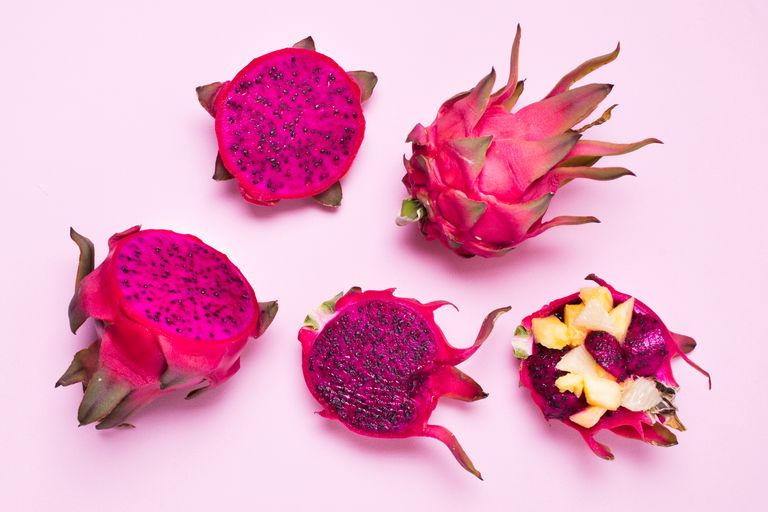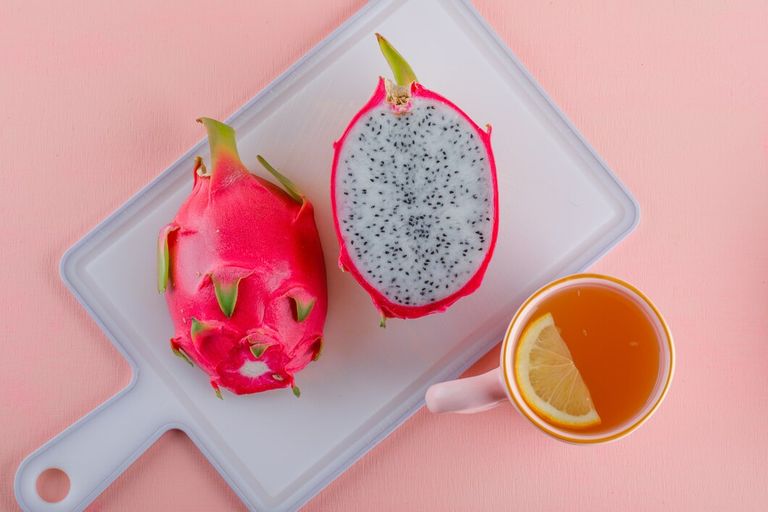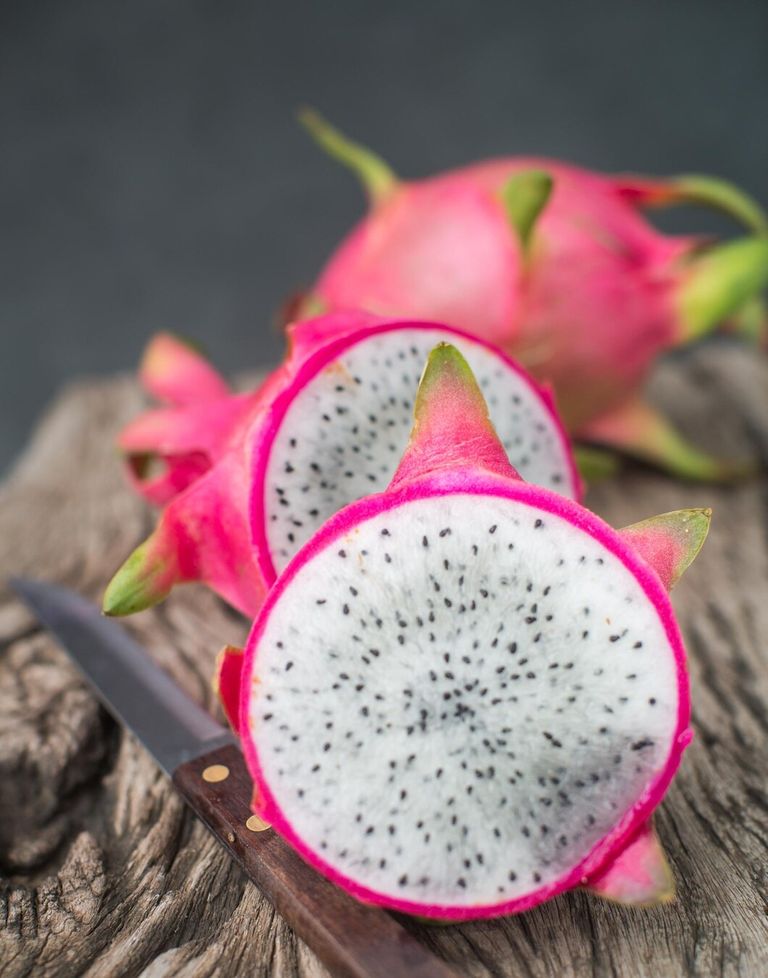Method of Dragon Fruit Cultivation and Benefits of Eating Dragon Fruit
Dragon Fruit Cultivation:
Dragon fruit, also known as Pitaya, is a tropical and subtropical fruit that belongs to the cactus family. It is prized for its unique appearance, vibrant colors, and nutritional benefits. Cultivating dragon fruit requires proper planning, care, and management to ensure healthy growth and high yield. Below is a step-by-step guide on how to cultivate dragon fruit:
Climate and Soil Requirements
Climate: Dragon fruit thrives in warm and humid climates with temperatures ranging between 20–30°C. It requires a frost-free environment and is tolerant of drought conditions.
Soil: Well-draining sandy loam soil with a pH of 5.5–7 is ideal. Poor drainage can cause root rot, so elevated or sloped lands are preferable.
Preparing the Land
Land Clearing: Clear the land of weeds and debris.
Soil Enrichment: Add organic compost or well-decomposed manure to enhance soil fertility. This ensures a nutrient-rich base for the plants.
Propagation Methods
Seed Propagation: Although dragon fruit can be grown from seeds, it is a slow process and is usually not recommended for commercial purposes.
Cuttings: Using stem cuttings is the most popular method. Select healthy, mature stems (about 30 cm long) and allow them to dry for 1–2 days to prevent rotting before planting.
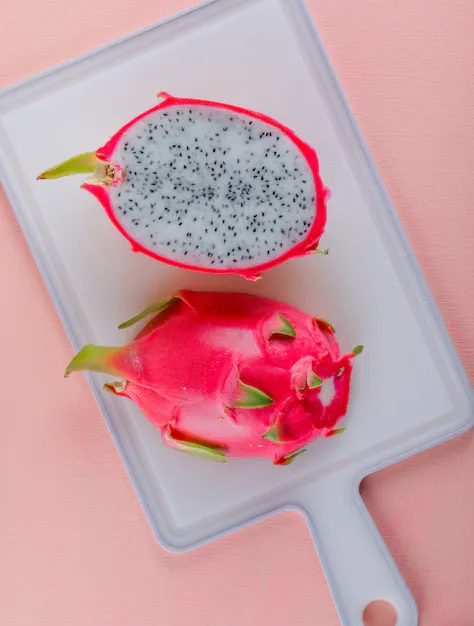
image source
Planting
Spacing: Maintain a spacing of 2–3 meters between plants and 3–4 meters between rows to allow adequate air circulation and sunlight.
Support System: Dragon fruit is a climbing cactus that requires vertical support. Install concrete or wooden poles (1.5–2 meters high) with a circular or horizontal frame at the top to guide the plant's growth.
Irrigation
Regular but moderate watering is essential, especially during the initial growth phase. Overwatering can lead to fungal diseases or root rot. Drip irrigation is a recommended method to conserve water and maintain consistent moisture levels.
Fertilization
Apply balanced fertilizers (NPK: Nitrogen, Phosphorus, Potassium) periodically to promote healthy growth and flowering. Organic options like vermicompost and cow dung can also be used.
Pruning and Training
Prune excess branches to allow light penetration and encourage the growth of productive stems.
Train the plant to climb the support structure, ensuring proper distribution of branches.
Pollination
Dragon fruit flowers are nocturnal and bloom for only one night. While self-pollinating varieties exist, hand pollination may be required to improve fruit set, especially for non-self-pollinating types.
Pest and Disease Management
Pests: Common pests include ants, aphids, and mealybugs. Use organic pesticides or neem oil for control.
Diseases: Fungal infections like stem rot and fruit rot can occur. Ensure good drainage and apply fungicides when necessary.
Harvesting
Dragon fruit is typically ready for harvest 30–50 days after flowering. The fruit is ripe when its color changes from green to vibrant pink or yellow, depending on the variety. Harvesting should be done carefully to avoid damaging the plant.
Benefits of Eating Dragon Fruit:
Dragon fruit is not only delicious but also highly nutritious, making it a valuable addition to a healthy diet. Here are the key benefits:
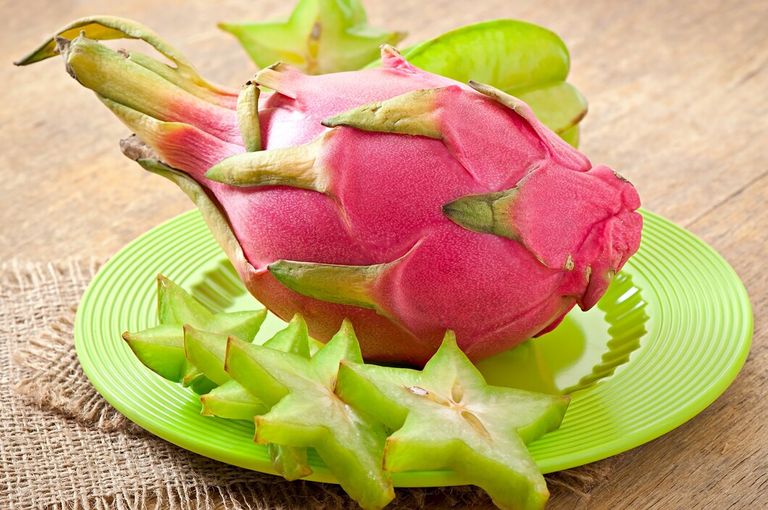
Rich in Nutrients
Dragon fruit is low in calories and packed with essential nutrients like Vitamin C, B vitamins, magnesium, calcium, and iron. These nutrients support overall health and energy production.
High in Antioxidants
It contains antioxidants such as betacyanins, flavonoids, and phenolic acids, which protect the body against free radicals and reduce the risk of chronic diseases like cancer and heart disease.
Boosts Immunity
The high Vitamin C content strengthens the immune system, helping the body fight infections and diseases more effectively.
Aids Digestion
Dragon fruit is a good source of dietary fiber, promoting healthy digestion and preventing constipation. It also supports gut health by encouraging the growth of beneficial gut bacteria.
Supports Heart Health
The fruit's seeds are rich in omega-3 and omega-6 fatty acids, which help lower bad cholesterol levels and improve cardiovascular health.
Promotes Skin Health
Its antioxidant properties slow down aging by fighting oxidative stress, while Vitamin C boosts collagen production, enhancing skin elasticity.
Regulates Blood Sugar
Dragon fruit has a low glycemic index and contains compounds that help stabilize blood sugar levels, making it beneficial for people with diabetes.
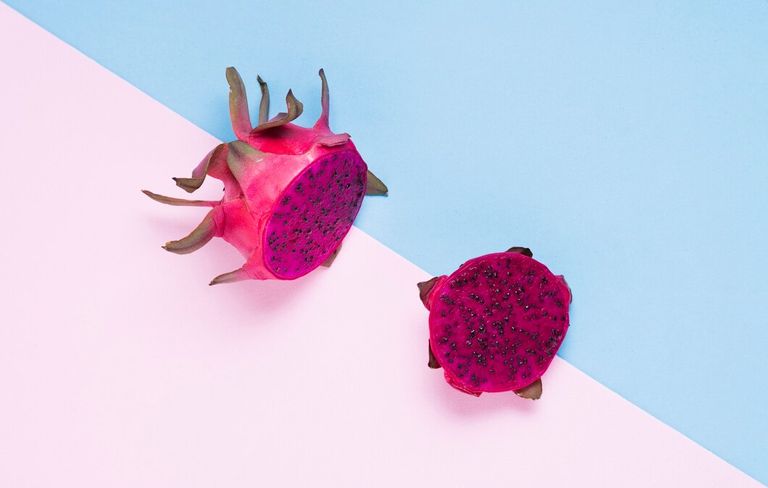
Aids Weight Management
The low-calorie content and high fiber in dragon fruit help keep you full longer, reducing overall calorie intake and supporting weight management.
Conclusion
Dragon fruit cultivation is an excellent venture for farmers in suitable climates, thanks to its growing global demand. With proper care and management, it yields high-quality fruit with numerous health benefits. Eating dragon fruit regularly can improve overall well-being, making it a nutritious and exotic addition to a balanced diet.
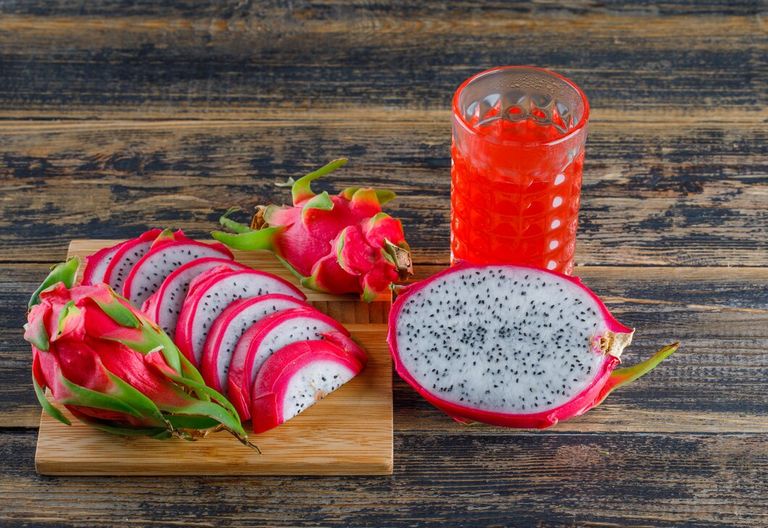
Image source
Ending here today..........
❤️ Thanks for visiting my blog.
I hope you like this blog.
If you like the blog, let me know through the comment.
See you again in the next blog.
Stay healthy, be careful and follow me.
